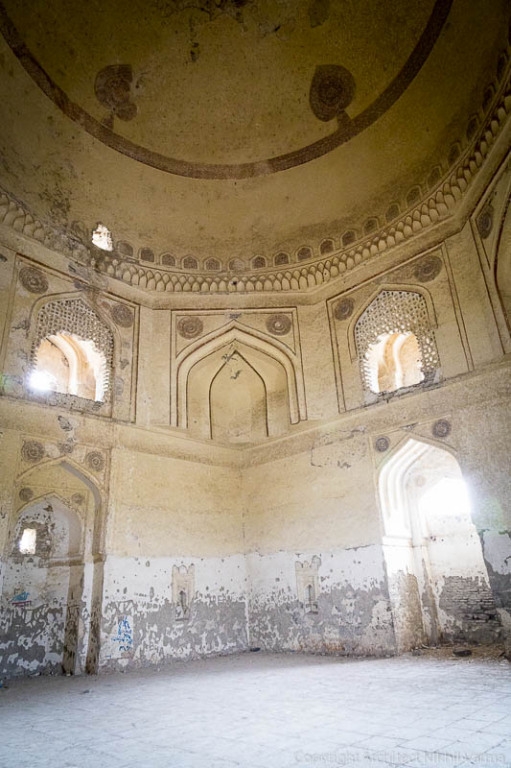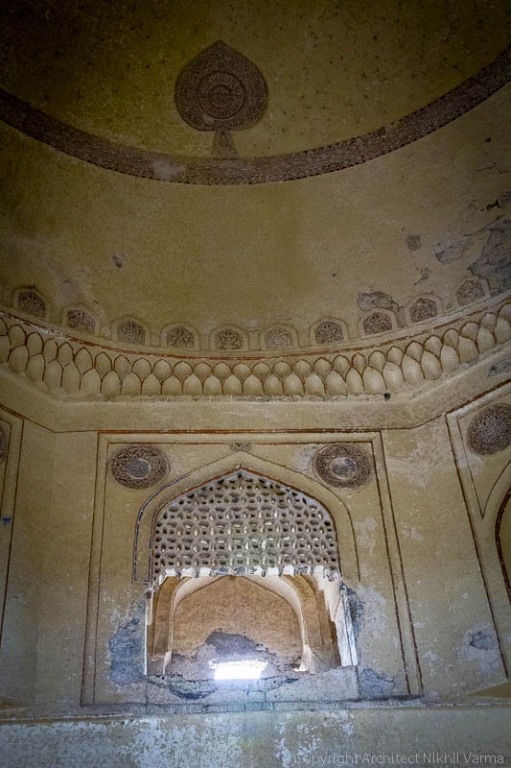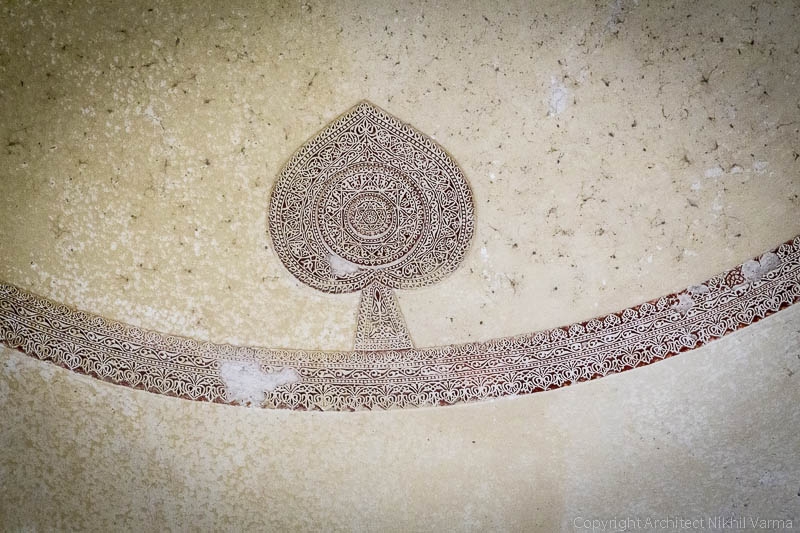There was this lone tomb. I first saw it on the distant horizon, while traveling in train from Bangalore to Ahmadabad. It was all alone. The loneliness of this not so small, in fact a fairly large tomb, made me curious. I had not imagined at that time, that I would be traveling to it so soon. I was in Gulbarga, while documenting three cities of the Deccan Sultanate, and once again found this tomb, alone on its plateau hill. Under the setting sun on the west of the Gulbarga fort I saw this tomb again. The tomb seemed to call. I made it a point to visit it.
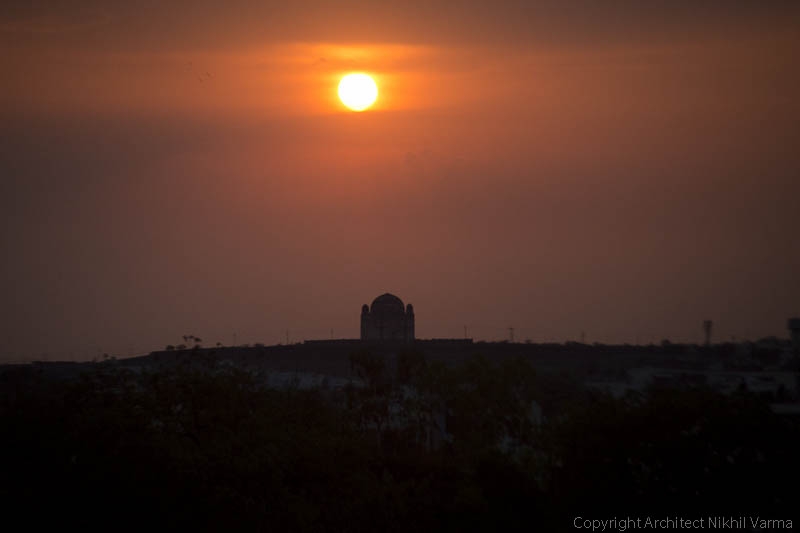
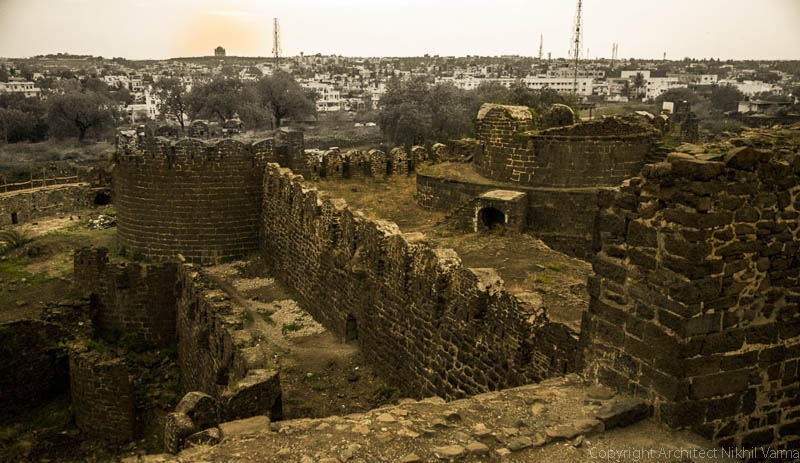
Encroachment happening, can still be stopped!
It is a protected site under Karnataka State Archaeology. It even has a very small boundary, circled by a wall with an easy to enter steel gate. Is it this boundary that made people think that it was all this tomb was about?
Today just outside the wall are layouts marked and being sold. The encroachment being sold as plots, with even a real-estate dealer making a small office in the precinct. The plateau or hill as one may call it is being excavated.
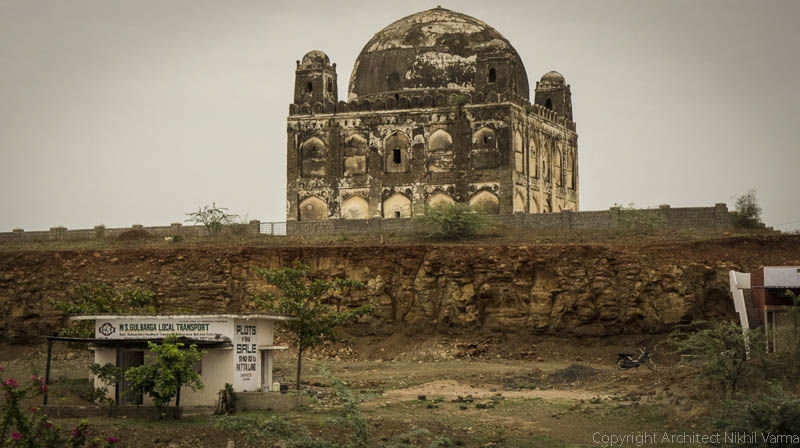
As I later discover, the boundary is actually the plinth of the tomb. The tomb belongs to the hill and the hill to the tomb. The two are together. How could anyone think of separating and “dismembering” the two? Soon the calling of this wonderful tomb will be lost amidst the would-be crop of buildings that will come all around it.
The beauty of Chor Gumbad, is not merely in its fine stucco, but its “environmental setting”. The lone tomb is deliberately chosen to be built west of the Gulbarga fort, atop the hill. The tomb has some of the finest stucco on its ceilings and the jalis (now mostly broken). Chor Gumabd does not house a grave at all, but is perhaps a victory monument. It is a unique and beautifully set piece of architecture. Alas, today it seems we are not able to appreciate this, or respect heritage, or least – even follow the law!
I hope that some wisdom prevails and the authorities wake up to stop this encroachment from occurring before it is too late – the Karnataka State Archaeology and District Administration of Gulbarga, who sitting in their offices with their paper-work don’t seem to sense the urgency, importance and beauty of a thing to which we all have the right and ownership.
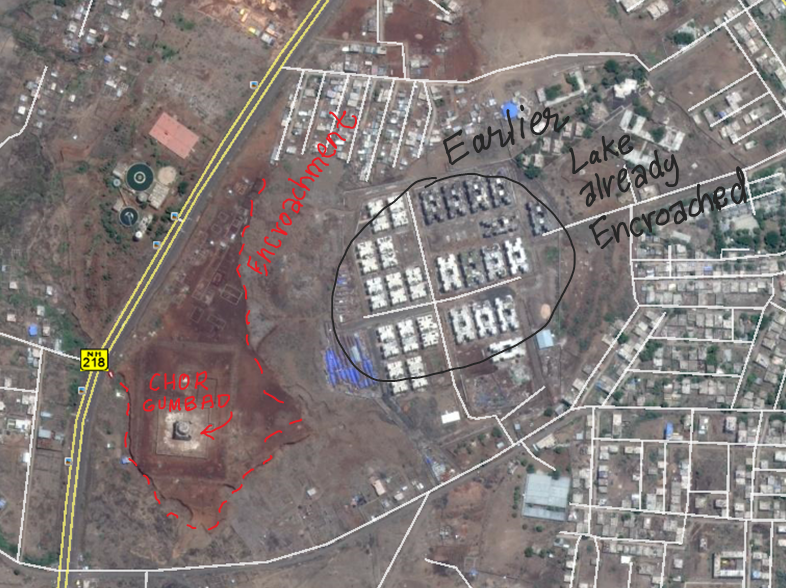
The same situation had arisen in 2005 (a decade ago!) when GUDA (Gulbarga Urban Development Authority) woke up and averted encroachment. A decade later, it seems it is sleeping again. (Read the 2005 May 29 article in Deccan Herald here)
People of Gulbarga don’t seem to bother about this or lost in their daily life, else how is it that a monument that has such a call from some 15km away, telling visitors Gulbarga has come, is now come to be encroached so badly?
Chor Gumbad: History and Architecture
This monument has no burials or graves, but the monumental dome suggests it “may have been erected by Ahmad Shah to commemorate his victory over his brother, Firuz Shah, and his return to the throne in 1422, thanks to the support of his pir, or spiritual adviser, Gesu Daraz.” (quoted from Helen Philon’s Gulbarga, Bidar, Bijapur)
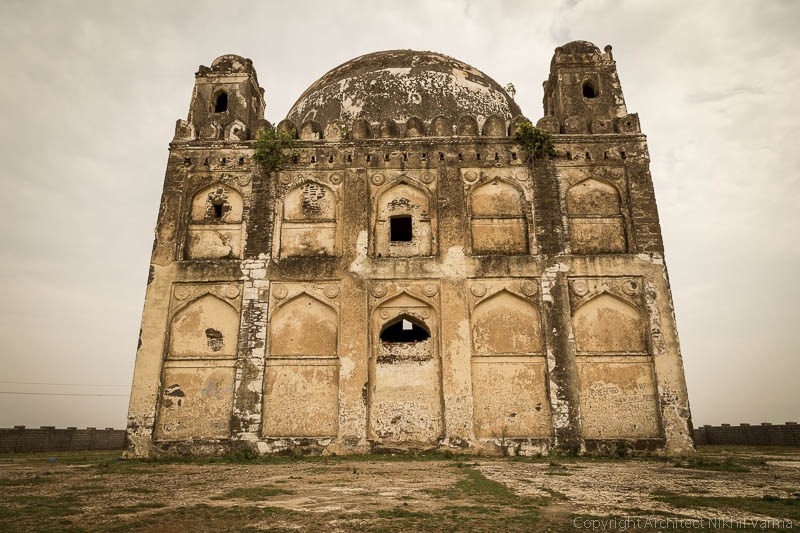
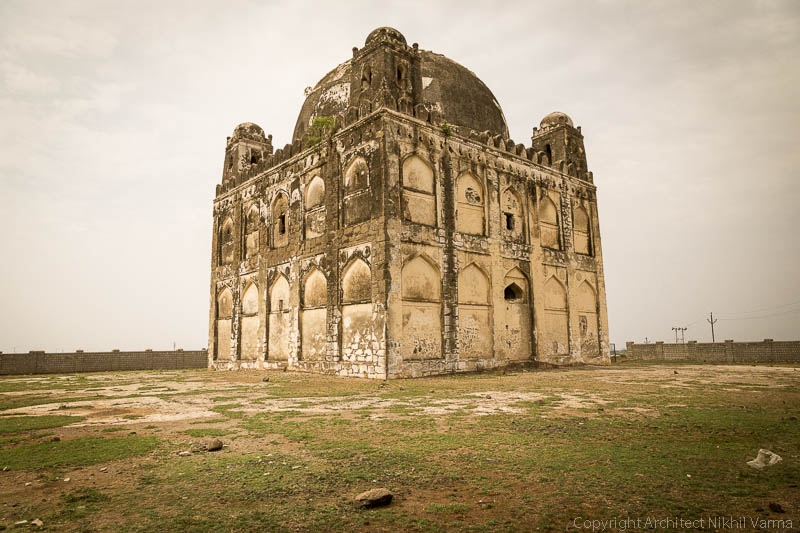
The tomb has an entrance to the east, facing the Gulbarga fort. The ceiling of the dome is decorated with a band of stucco scrolls, from which emerge large leaf shaped tree motifs filled with scrolls. There are steps that lead to an upper corridor screened by jalis (now mostly broken and vandalised), evidently meant for ladies of the Bahmani court. Further on the rooftop are chhatris, like miniature tombs on the four corners with domes and small corner minarets.
